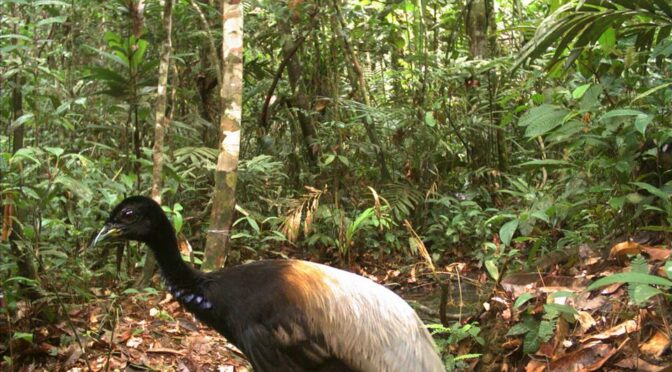
© White-lipped pecarry (Tayassu pecari)/The Field Museum
‘You can’t argue for the protection of an area without knowing what is there.’
If you lived in a remote part of the Peruvian jungle, under normal circumstances you might have found it a little unnerving to witness 25 Field Museum scientists lugging huge cases of equipment into your backyard, but this time it’s for a very good cause.
This remote part of the world is inhabited by nine indigenous tribes and a lot of unmolested wilderness due to the fact that it’s only accessible by helicopter. Regardless of that, it’s now under threat due to illegal mining and logging, as well as a newly proposed road. The people who live there would obviously prefer that doesn’t happen. That’s where these Field Scientists come in.

The gray brocket deer (Mazama gouazoubira)
Over the last 17 years the museum’s rapid inventory program, like the one in Peru, has helped governments establish 18 new protected areas in South America totaling 26.5 million acres.
“You can’t argue for the protection of an area without knowing what is there,” says Corine Vriesendorp, Director of The Field Museum’s rapid inventory program.

An Ocelot (Leopardus pardalis) © Tayra (Eira barbara)/The Field Museum
The field team scientists spent more than 17 days using drones and hidden cameras to conduct a quick inventory of whatever flora and fauna they could find in the area. They set up 14 camera traps and used a drone for birds-eye footage of the rainforest.

© Tayra Weasel (Eira barbara)/The Field Museum
“No scientists have ever explored this area, let alone document it with cameras and drones,” notes Jon Markel, The Field Museum’s Geographic Information Systems (GIS) specialist. “These images are the first time this remote wilderness and the species that call it home are being recorded for science.”

© Giant armadillo (Priodontes maximus) The Field Museum
The biodiversity they documented is absolutely incredible! They recorded 1,820 plant, fish, amphibian, reptile, bird, and mammal species, including 19 previously unknown species. The cameras revealed ocelots, giant armadillos, currassows, giant anteaters, tapirs, peccaries, and pacas among many other creatures.

© Crab-eating raccoon (Procyon cancrivorus) The Field Museum
“We discovered an intact forest inhabited by indigenous people for centuries and teeming with wildlife,” says Vriesendorp. “We want it to survive and thrive long after our cameras are gone.”
You can see more of the animal “selfies” and drone footage at The Field Museum’s Facebook page.

